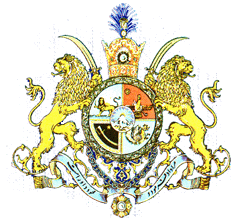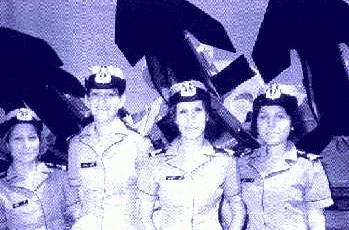


Iranian women operating a missile battery aboard a navy
destroyer.
The struggle for women's rights in Iran has been closely associated with the Pahlavi dynasty. Reza Shah dramatically abolished the veil, which he saw as the emblem of an obsolete tradition, gave women equal educational opportunities, established the girl guide movement, and encouraged women to work outside the home.
His son Mohammad Reza Pahlavi and immediate family continued to struggle for the full emancipation of women, and Iranian women up to 1979 did enjoy a high degree of equality with men.
The most important advancement of women's rights occurred in 1963 when as part of the reform of the electoral law they were given the right to vote and to run for any elected office. In the last parliamentary elections during the Shah's reign, over one million women voted, and out of 99 women candidate 19 were elected to the Majlis and two to the Senate. A women was also appointed to the Cabinet, in a new post as Minister of State for Women's Affairs. See Mahnaz Afkhami, presently running the Foundation for Iranian Studies (FIS) in Washington D.C., endowed by Princess Ashraf Pahlavi.
Women were playing an increasingly active role in public life, as well as obtaining a fairer share of the educational opportunities to them. In 1960 only 185,700 females were attending I school and university, some 10 per cent of total enrolment. In 1976, the number was over two million, and the ratio of females to males rose to over 35 per cent. The number of female students undergoing higher education went up at an average annual rate of 65 per cent.
Better education was enabling women to get better jobs. The ratio of women in the labour force has rose from seven per cent to 13 per cent in less than ten years, and women were entering the labour market in a much wider range of fields and at higher levels of skill and competence.
The main body concerned with women's rights is the Women's Organization of Iran (WOI) established in 1967 with Princess Ashraf Pahlavi as its president. The year 1975 was a parti ularly active role for the Organization, and Iranian delegations participated in a number of international gatherings, particularly the U.N Conterence on Women's Rights in Mexico, at which Princess Ashraf proposed the formation of a permanent research and training institute for women's affairs, which was established in Tehran. At the Mexico conference Princess Ashraf made the point that "all the efforts and instructions of political leaders cannot prove effective if women themselves do not participate in socio-economic and political programmes to grant them equality."
WOI was running family welfare centres, the number of which rose to 97 in 1976. At these centres, child care, vocational training, family planning and legal advice were among some of the main services provided. WOI also played an active role in Iran's literacy campaign with the emphasis on teaching women marketable skills as well as the ability to read and write.
In the field of research WOI was carrying out some interesting projects, including studies of the social, political and economic problems facing women, on the basis of which it would have proposed further new regulations aimed at ensuring more equitable conditions. Iranian laws were being reviewed to locate possible areas of discrimination, and school textbooks scanned to ensure that obsolete and pre-conceived notions of women were completely eliminated.